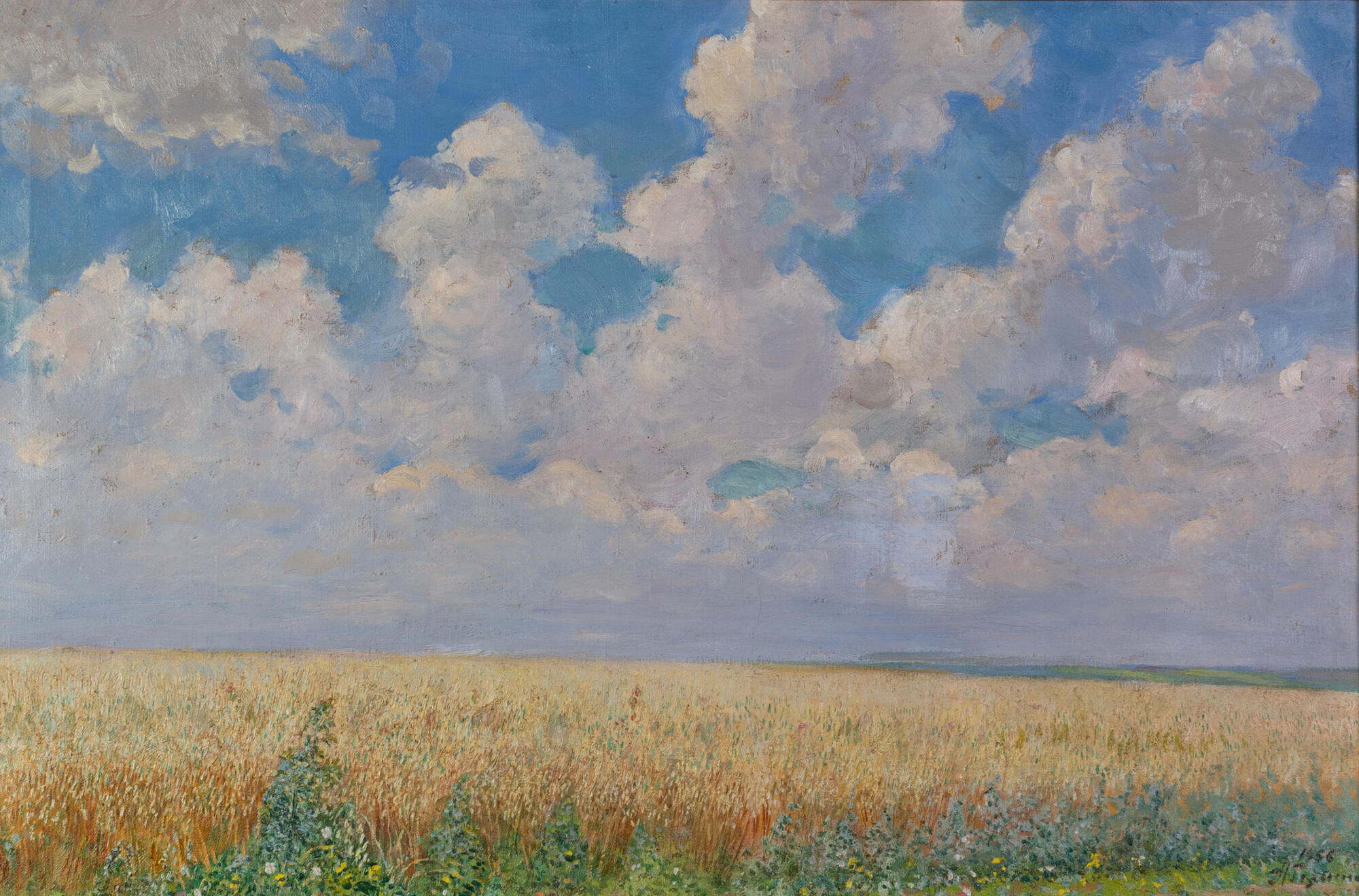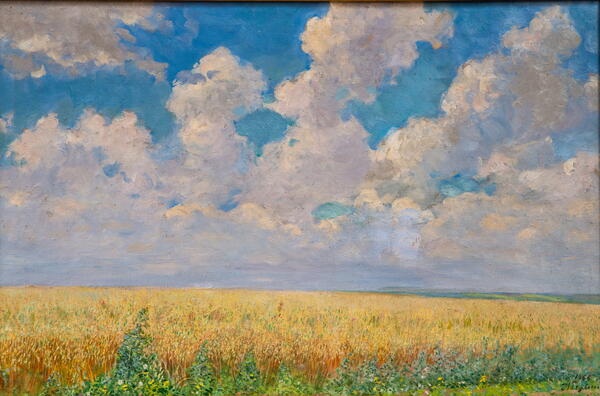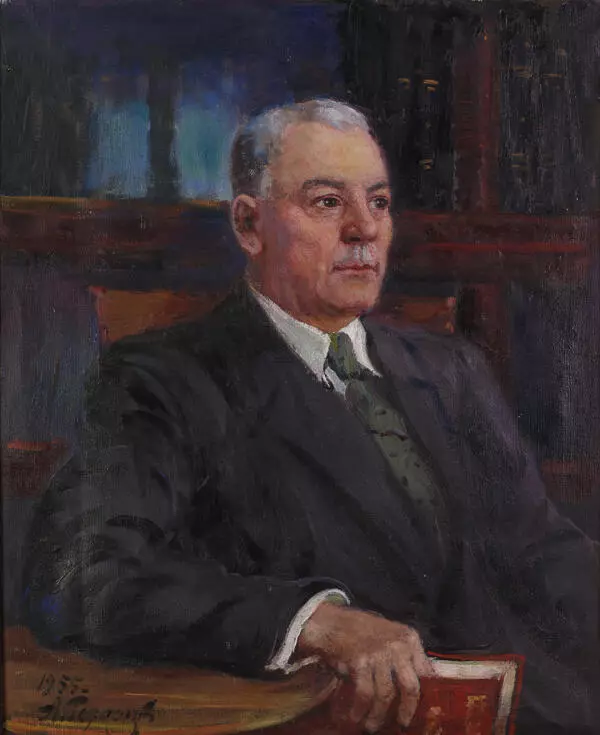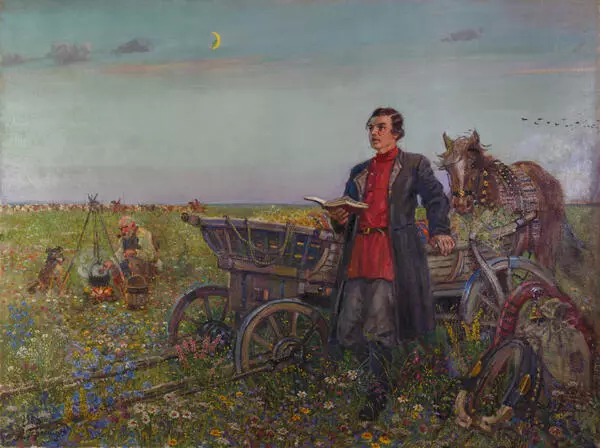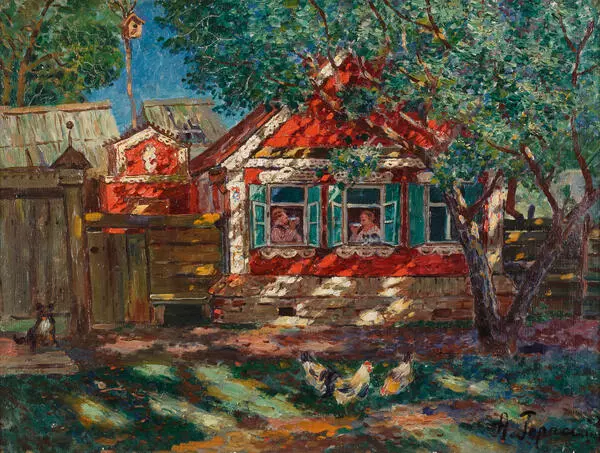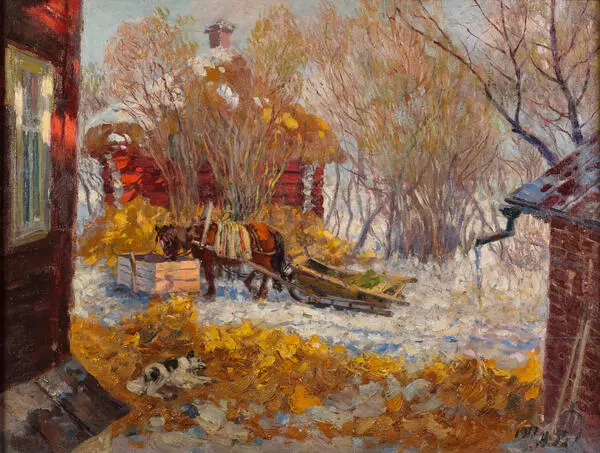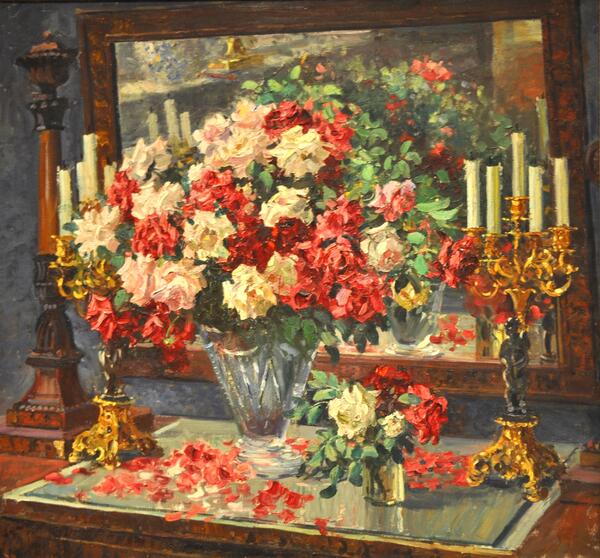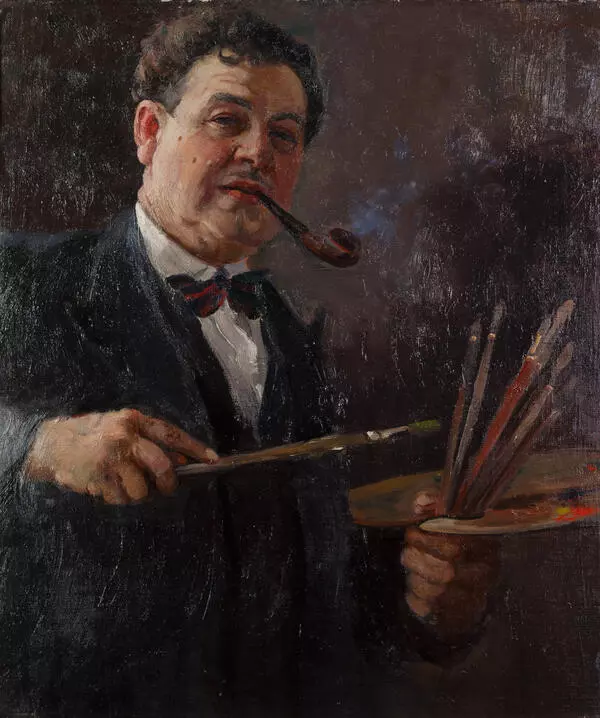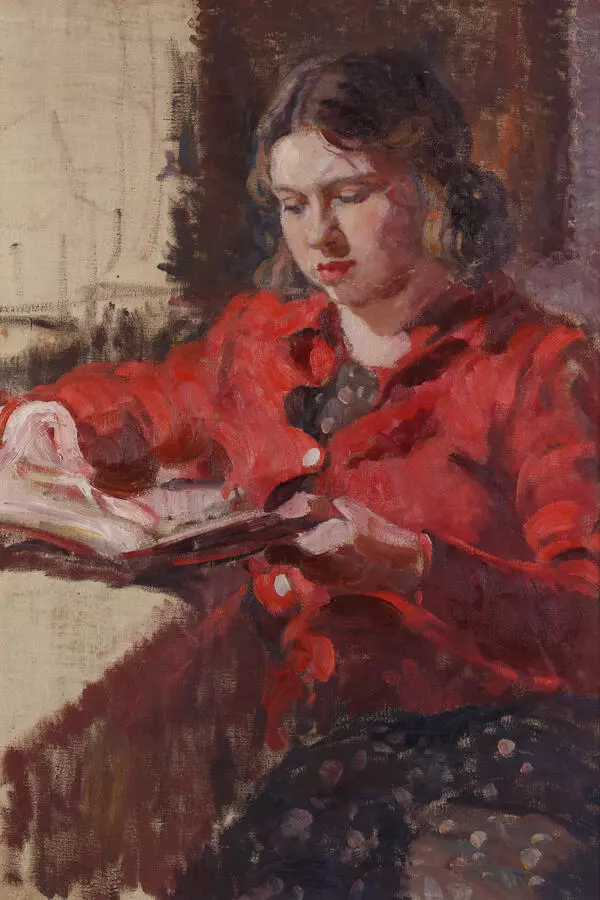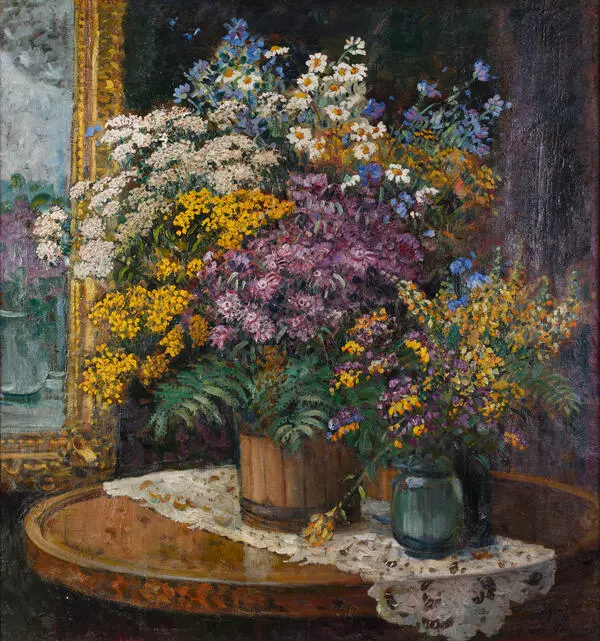Throughout his long career, the People’s Artist of the USSR Alexander Gerasimov created a lot of diverse landscapes, depicting old courtyards of his hometown Kozlov, remarkable streets of Moscow, and colorful views of foreign countries. And yet landscapes showing Russian fields were especially close to his heart. “My love for painting was nourished by the fragrance of my native fields and steppes” — Alexander Mikhailovich used those poetic words to describe the source of his creativity.
In Alexander Gerasimov’s paintings, the image of Russian nature in the Tambov region is rendered in a quite familiar and characteristic way and yet acquires a new coloring. Gerasimov said, “The entire south of the Tambov region is a flat steppe, without hills and ravines, stretching into the blue horizon, straight as an arrow. Neither the forest nor the mountains can leave so much room for imagination as the steppe warmed by the sun. I saw the steppe when it was not yet plowed. In spring and early summer, it does look a lot like ‘Silky brocade of steppe and grass.’ It finishes blooming quickly when the weather is hot. On blazing summer days, clouds are piling up in the sky, ranging in color from brilliant white to violet blue. In the middle of summer, the steppe is covered with ripening rye and resembles a yellow-golden desert, where gardens scattered at a great distance from each other turn blue, like oases.”
Alexander Gerasimov noted that it is difficult for an artist to convey steppe motifs with verisimilitude. At the same time, he admired the touching poems of Aleksey Koltsov and believed that he felt all the charm and vastness of the steppe like no one else did. He also said that the wonderful book by Sergey Sergeyev-Tsensky “The Sorrow of the Fields” described the steppe in a truthful and accurate way. The artist wrote, “The people composed many songs about the wide steppe and open country. The folk melodies, slow and lingering, captivate me as much as boundless steppes.”
It is no wonder that the creativity of poetry and folk songs inspired Alexander Gerasimov to express his admiration on canvas. The simple composition of the landscape “Oats” shows an endless field of ripening crops. The low horizon in the picture emphasizes the feeling of a special limitlessness, which magnetized the artist, who depicted the “vast expanses and far reaches” of his homeland.
In Alexander Gerasimov’s paintings, the image of Russian nature in the Tambov region is rendered in a quite familiar and characteristic way and yet acquires a new coloring. Gerasimov said, “The entire south of the Tambov region is a flat steppe, without hills and ravines, stretching into the blue horizon, straight as an arrow. Neither the forest nor the mountains can leave so much room for imagination as the steppe warmed by the sun. I saw the steppe when it was not yet plowed. In spring and early summer, it does look a lot like ‘Silky brocade of steppe and grass.’ It finishes blooming quickly when the weather is hot. On blazing summer days, clouds are piling up in the sky, ranging in color from brilliant white to violet blue. In the middle of summer, the steppe is covered with ripening rye and resembles a yellow-golden desert, where gardens scattered at a great distance from each other turn blue, like oases.”
Alexander Gerasimov noted that it is difficult for an artist to convey steppe motifs with verisimilitude. At the same time, he admired the touching poems of Aleksey Koltsov and believed that he felt all the charm and vastness of the steppe like no one else did. He also said that the wonderful book by Sergey Sergeyev-Tsensky “The Sorrow of the Fields” described the steppe in a truthful and accurate way. The artist wrote, “The people composed many songs about the wide steppe and open country. The folk melodies, slow and lingering, captivate me as much as boundless steppes.”
It is no wonder that the creativity of poetry and folk songs inspired Alexander Gerasimov to express his admiration on canvas. The simple composition of the landscape “Oats” shows an endless field of ripening crops. The low horizon in the picture emphasizes the feeling of a special limitlessness, which magnetized the artist, who depicted the “vast expanses and far reaches” of his homeland.
